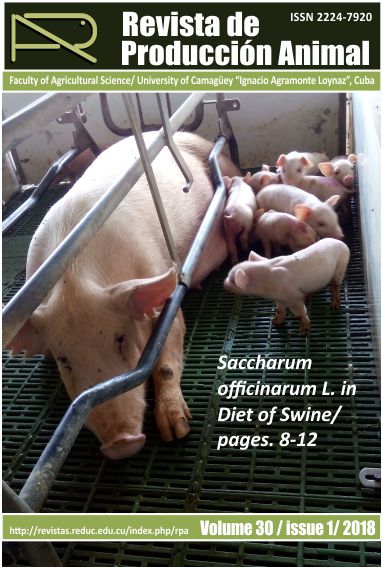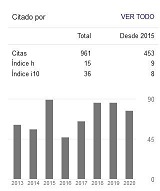Association of Disease Outbreak and Reproduction in Cattle Herds
Resumen
In order to determine the effects of infectious and parasitic diseases during the reproductive stage of artificially inseminated dairy cattle herds in the municipality of Camagüey, province of Camagüey, Cuba, the monthly data of death causes and number of cases (2010-2014) were collected at the company Triángulo 3. Significant correlations were found between the categories of the reproductive stage and the number of cases, seen as stimulus intensity (none = 0; one case = 1; about 2-4 cases = 2; five or more cases = 3). Probit regression revealed that the higher the stimulus the fewer cows awaiting diagnostic, and the greater the number of empty cows. Hence, these cases had a negative impact on the dairy herd´s reproductive behavior. This study recommends Probit regression as a tool for analysis of health issues associated with variables that define the reproductive status of the herd.
Descargas
Los autores de los artículos publicados en RPA retienen los derechos de autor de su trabajo, de marca y patente, y también sobre cualquier proceso o procedimiento descrito en el artículo, así como a compartir, copiar, distribuir, ejecutar y comunicar públicamente el artículo publicado en la RPA o cualquier parte de aquel siempre que indiquen la fuente de publicación (autores del trabajo, revista, volumen, número y fecha), pero están de acuerdo en que la revista publique los trabajos bajo una licencia Creative Commons.
![]() Licencia Attribution-NonCommercial 4.0 International (CC BY-NC 4.0)
Licencia Attribution-NonCommercial 4.0 International (CC BY-NC 4.0)






































